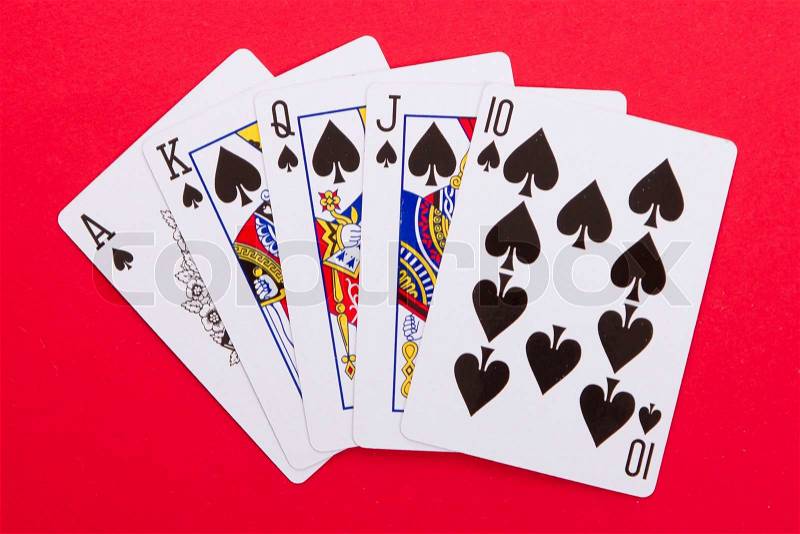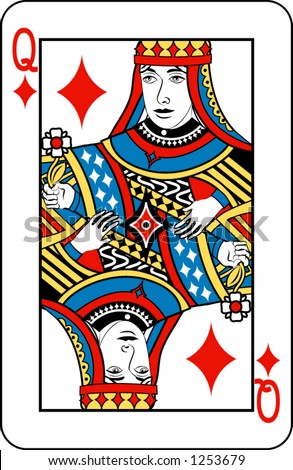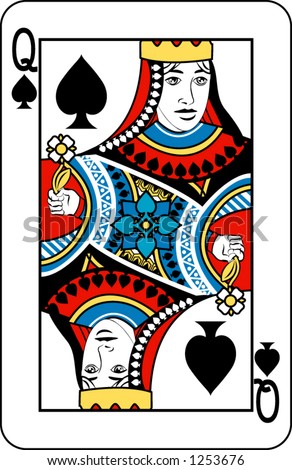
The next time you play a game of bridge, whist or perhaps poker take a close look at the court cards. Have you ever wondered who they are all?
Many people think the queens were married to the kings and that the jacks were their sons or princes, and that they were nice happy families. But this is not the case. The kings, queens and jacks are biblical, historical or legendary figures quite unrelated to one another.
 Moreover, cards have changed very little since they first appeared about six hundred years ago.
Moreover, cards have changed very little since they first appeared about six hundred years ago. The cards we use today are based closely on a pattern developed in Paris and which was redrawn after the French Revolution. The main change since then was the introduction of double ended cards.
The four suits themselves, hearts, spades, diamonds and clubs represented ranks of society during the Middle Ages when cards were first played.
Hearts, the highest suit, represent courage and the highest development in learning. These were assigned to the churchmen, who were the most important and learned group of people of the times.
Spades are nothing to do with the garden tools, as many people think. Spade scomes from a Spanish word, expada, meaning sword. Thus spades represent the soldier, an important group in society, though not as important as the churchmen. In many games of cards spades are next in importance to hearts.
Diamonds stood for the merchants because they traded in precious jewels. Although economically an important group, they weren't always considered particularly important in society; indeed the upper classes often thought them rather vulgar. So diamonds rate only third in importance.
At the bottom on the heap are clubs. They represent the peasants and farmers, considered the least important group. In some games, clubs are the lowest suit in the pack.
The kings are four great monarchs in history.
 The King of Spades is David from the Bible, who killed the giant, Goliath, and became King of Israel.
The King of Spades is David from the Bible, who killed the giant, Goliath, and became King of Israel. The king of Clubs is holding an orb in one hand and sword in another. He represents Alexander the Great, the Greek king who set up an empire that covered most of the Middle East, and the orb is the symbol of this empire.
Now look at the King of Diamonds. He's Julius Caesar, and the only one carrying not a sword, but a battleaxe.
The last king, of Hearts, is King Charlemagne, the French king who founded an empire in Europe during the 8th Century. He's the only king in the pack without a moustache.
 Of the Queens in the pack the two red queens are biblical figures.
Of the Queens in the pack the two red queens are biblical figures.The Queen of Diamonds is Rachel, who finally married Jacob after he had worked seven years for her, and the Queen of Hearts if Judith, who showed her courage by chopping off a general's head.
 The other two queens are Athena, the Greek goddess of wisdom for spades and Elizabeth 1, Good Queen Bess, for clubs.
The other two queens are Athena, the Greek goddess of wisdom for spades and Elizabeth 1, Good Queen Bess, for clubs. All the queens hold a flower but Athena, Queen of Spades, also carries a sceptre, the symbol of royal authority.
The jacks are not related to the kings and queens as many people think. Two of them are Knights of the Round Table of King Arthur.
The Jack of Clubs is Sir Lancelot who fell in love with Queen Guinevere and caused such trouble in Camelot by doing so, while the Jack of Diamonds is his half brother, Sir Hector. Neither of these has a moustache.
The other two jacks, both of whom have moustaches, are less well known to the British. The Jack of Hearts is a French soldier called La Hire, who fought with Joan of Arc when she led her army against the British. He is holding a battleaxe in one hand and a feather in the other.
Finally, the Jack of Spades is a cousin of Charlemagne by the name of Hogier the Dane, and is carrying a strange looking staff which seems to have no particularly significance.

The court cards together are a very international group of people with representatives from all over the world - a sort of United Nations of the deck.
So next time you play a game of cards look carefully at the pictures and think of the real people who are represented by the court cards. You may not be able to concentrate on the game!
See also: http://houseofplayingcards.com/playing-card-history and http://www.madore.org/~david/misc/cards.html
I've just been looking through my later mother's stuff and found an old pack of cards - and the names are even written on them!



No comments:
Post a Comment